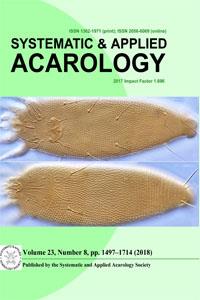The 65th Medical Brigade (MED BDE)/Medical Department Activity-Korea (MEDDAC-K), in collaboration with the Migratory Birds Research Center, National Park Research Institute, conducted migratory bird tick-borne disease surveillance at six small, remote, uninhabited islands near the western (Nan Island), southwestern (Chilbal, Gugul, Gaerin, Hong, and Sogugul islands) and southeastern (Hong Island) coastal areas of the Republic of Korea (ROK) during 2009 and from 2014–2017. Ticks were collected from nest soil/litter of the Ancient Murrelet (Synthliboramphus antiquus), Japanese Murrelet (Synthliboramphus wumizusume), Swinhoe's Storm Petrel (Hydrobates monorhis), Black-tailed Gull (Larus crassirostris), Pacific Swift (Apus pacificus), and Streaked Shearwater (Calonectris leucomelas) using Tullgren funnels. Ticks also were collected from recently dead nestlings of Swinhoe's Storm Petrel and Black-tailed Gull at Gugul, Sogugul, Gaerin, Nan, and Hong islands, and single ticks were collected from vegetation (tick drag) and a human bitten on Chilbal Island. A total of 1,578 ticks (61 females, 122 males, 290 nymphs, and 1,105 larvae), belonging to four genera and six species, were collected. Ornithodoros capensis (73.00%; 1,152) was the most commonly collected tick on migratory seabirds, followed by Ornithodoros sawaii (26.55%; 420), Ixodes uriae (0.19%; 3), and Ixodes signatus (0.13%, 2). One (0.06%) Haemaphysalis flava was collected by tick drag and one (0.06%) Amblyomma testudinarium was collected while biting one of the survey members. Ornithodoros species were identified morphologically and confirmed using polymerase chain reaction (PCR) techniques. This is the first record of O. sawaii collected from nest soil/litter during the 2017 nesting season of the Pacific Swift and Streaked Shearwater in the ROK.
How to translate text using browser tools
27 July 2018
Ticks collected from soil/nest litter and live and dead nestlings of migratory seabirds during their breeding season at six uninhabited Islands, Republic of Korea during 2009 and 2014–2017
Heung-Chul Kim,
Jong-Gil Park,
Young-Soo Kwon,
Miran Kim,
Chang-Uk Park,
Seok-Min Yun,
Sung-Tae Chong,
Myung-Soon Kim,
Terry A. Klein,
Richard G. Robbins
ACCESS THE FULL ARTICLE

Systematic and Applied Acarology
Vol. 23 • No. 8
August 2018
Vol. 23 • No. 8
August 2018
Amblyomma testudinarium
birds
Korea
Ornithodoros capensis
Ornithodoros sawaii
ticks
uninhabited islands




